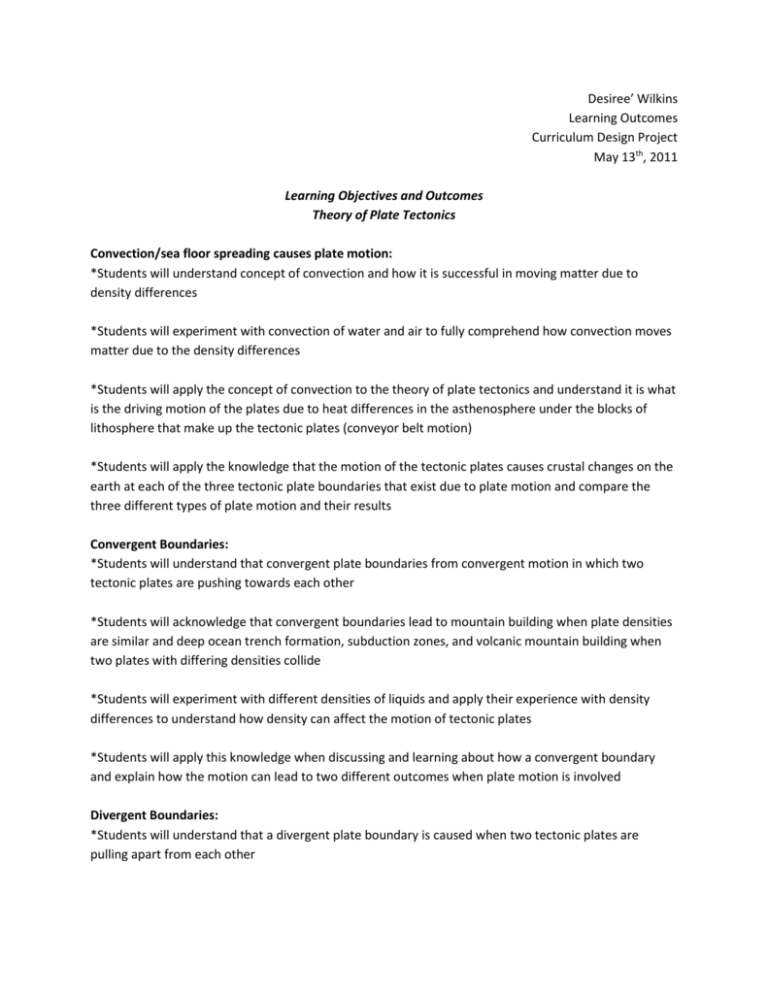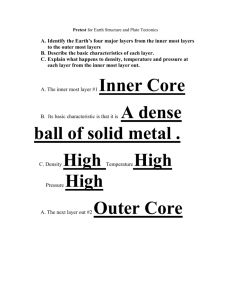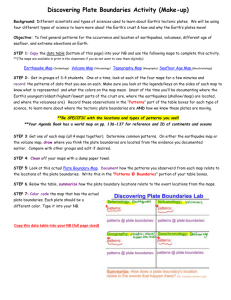Learning Objectives-Curriculum Design Project
advertisement

Desiree’ Wilkins Learning Outcomes Curriculum Design Project May 13th, 2011 Learning Objectives and Outcomes Theory of Plate Tectonics Convection/sea floor spreading causes plate motion: *Students will understand concept of convection and how it is successful in moving matter due to density differences *Students will experiment with convection of water and air to fully comprehend how convection moves matter due to the density differences *Students will apply the concept of convection to the theory of plate tectonics and understand it is what is the driving motion of the plates due to heat differences in the asthenosphere under the blocks of lithosphere that make up the tectonic plates (conveyor belt motion) *Students will apply the knowledge that the motion of the tectonic plates causes crustal changes on the earth at each of the three tectonic plate boundaries that exist due to plate motion and compare the three different types of plate motion and their results Convergent Boundaries: *Students will understand that convergent plate boundaries from convergent motion in which two tectonic plates are pushing towards each other *Students will acknowledge that convergent boundaries lead to mountain building when plate densities are similar and deep ocean trench formation, subduction zones, and volcanic mountain building when two plates with differing densities collide *Students will experiment with different densities of liquids and apply their experience with density differences to understand how density can affect the motion of tectonic plates *Students will apply this knowledge when discussing and learning about how a convergent boundary and explain how the motion can lead to two different outcomes when plate motion is involved Divergent Boundaries: *Students will understand that a divergent plate boundary is caused when two tectonic plates are pulling apart from each other *Students will acknowledge that divergent plate motion causes the deformation of the crust in the form of mid-ocean ridges and rifting of the crust due to the plates pulling apart the crust on top of them *Students will apply the knowledge that this type of plate motion causes rifting and also understand that due to density differences in the magma under the tectonic plates new sea floor is formed due to these events because magma comes up and is generating the new sea floor in the rifts *Students will evaluate how the formation of new sea floor leads to the movement of the continents (continental drift) which is a result of tectonic plate motion *Students will experiment with divergent motion of clay and apply it to the idea of how divergent motion changes the shape of the crust Transform Boundaries: *Students will understand that plate motion that is transform results in tectonic plates moving or sliding past each other horizontally *Students will understand that transform motion results in the vibration and “breaking” of the tectonic plates which then results in earthquake motion *Students will apply the knowledge that earthquake motion can cause phenomena like tsunamis when they occur under the ocean floor and result in tremendous damage to the crustal areas when they occur near these areas *Students will understand how earthquake waves affect the earth surface when experimenting with elastic rebound and transform motion of different objects and apply this knowledge to the topic *Students will compare their knowledge of transform plate motion, elastic rebound, and how tsunamis and destruction occur when earthquakes occur to news articles and current events they may read about in the news and other media outlets






